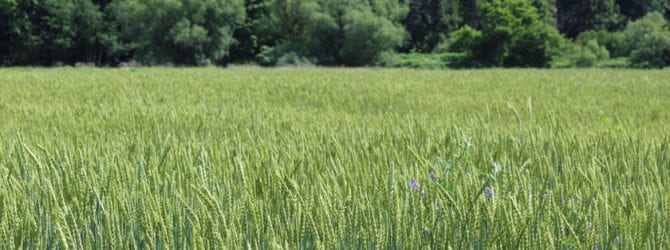Cornell Cooperative Extension of Delaware County offers information and resources for field crop production of traditional forage and grain crops. We offer services from the ground up, starting with soil nutrient and pH testing. Cornell University soil test kits are available for purchase at our office with analysis and results coming from the soil nutrient analysis lab at Cornell University. We can also perform quick soil pH tests (and have pH test kits available for sale) at our office for those in need of quick turnaround. When soil test results are returned from Cornell, we can assist you in interpreting them if needed, as well as making new soil fertility recommendations if your cropping plans change.
Other areas of fields crop production we offer expertise and resources in:
- General weed and insect identification and control recommendations based in University testing and Integrated Pest Management principles
- Variety selection based on soil type and fertility and intended crop use
- Crop planting, harvest, and storage management
- Crop rotation planning
- Crop nutrient management planning
Scissors Cut:
Forage Quality reports are generated from multiple sampling sites in Delaware County and the surrounding region. Reports contain information about plant heights, NDF, grass maturity, harvest times, etc.
Corn Dry Down Days:
Typically held in the fall; farmers bring in 5-7 corn stalks from each field for dry matter testing. Knowing the dry matter of the crop is the best way to predict optimum harvest timing and can help you get more information for scheduling your corn silage harvest.
Perennial Forage Management: Recommended cutting height
Perennial Forage Cutting Height (PDF) This is not a “one size fits all ” scenario. You need to consider:
- crop species
- field conditions
- ash content of the harvested forage
- time of year
- age of the stand
Alfalfa
- Manage cutting height based on field conditions, time of year and considerations for ash content in forage.
- Consider higher cutting height in fall to help capture and retain snow cover.
Grass
- A minimum of 3-4 inches stubble is critical.
- Grass stands are even more sensitive in the seeding year.
- The loss in grass stand productivity from cutting too low far outweighs any yield boost you might get from harvesting a few extra inches in that one cutting.
Mixed Stands
- In mixed stands cutting height could actually be used as a management tool for stand composition by choosing a cutting height that either favors grass or alfalfa.
Spring Cover Crop Management: Cover Crop Termination Considerations
Termination
- Some farmers are using paraquat (Gramoxone™) to burndown tall rye in spring. This chemical has a very fast and complete burndown, which is advantageous. It is also harmful to humans, and requires very careful application.
- If using glyphosate herbicide, use labelled rate for rye for the formulation you are using. Use spray grade ammonium sulfate for best performance and quickest burndown at a rate of 8-17 lbs/ 100 gallons mixed spray. Especially recommended if using hard well water. Glyphosate activity is slow in the spring when temperatures are cooler.
- Disking the crop only will not completely kill it.
- Harvest (mowing or grazing – even after heading) will not kill the crop.
- Terminating earlier avoids competition with successive crop and minimizes potential N immobilization that can occur with taller cereal rye crop.
- NRCS or SWCD program may require termination around 6” height.
- If terminating the cover crop and planting a crop in its residue, either plow down or spray with herbicide while still vegetative if you cannot contend with high residue conditions.
Harvest for forage or straw
- Winter Rye or triticale can be grazed at a standard grazing height of 8-10”.
- For best quality (lactating dairy cattle feed), harvest at flag leaf stage (last full leaf before head emergence. (Typically May 12 –May 20)
- For animals not requiring highest quality, harvest may be taken at boot stage or heading (typically May 20 – May 27)
- For Head Straw (also called Pre-Cut straw) harvest at heading, but before flowering (handing pollen – typically May 25 – June 1).
- Note that after harvest (mechanical or grazing) , the winter cereal will tiller and shoot heads again, which can interfere with the next crop. Plan on a herbicide application approximately 10-14 days post-harvest to control tillering. This can be part of a residual program to control later emerging weeds as well.
Other Considerations
- Choose a corn hybrid that will allow for earlier silage harvest if planning on using cover crops.
- If harvesting rye later for forage or straw, consider the impact of later planting on successive crops.
- Rye harvested later for forage or straw can remove a lot of soil moisture for a successive crop with may be a risk in dry years.
For more information, contact:
Dale Dewing
Field Crop and Nutrient Management Specialist for farms in the New York City Watershed
(607) 865-7090
OR
Paul Cerosaletti
Dairy & Field Crop Educator, Precision Feed Management Team Leader
(607) 865-7090


